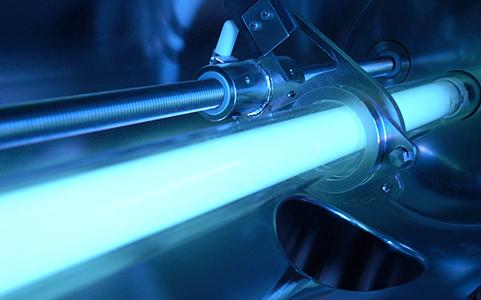Germicidal Lamps - Everything You Need to Know

Germicidal lamps are used for very specific needs. A germicidal lamp is a special type of lamp that produces ultraviolet (UVC) light. Germicidal lamps deactivate the DNA of bacteria, viruses and other pathogens and destroy their ability to multiply and cause disease. It can also be used to produce ozone for water disinfection.
This article aims to pinpoint exactly what germicidal lamps are, what they're used for and any risks associated with them.
What exactly are germicidal lamps?
As briefly mentioned above, germicidal lamps emit radiation in the UV-C portion of the ultraviolet (UV) spectrum. It uses wavelengths of between 100 and 280 nanometers (nm). These lamps are used in a variety of applications where disinfection is the primary concern, including air and water purification, food and beverage protection, and sterilization of sensitive tools such as medical instruments.
Germicidal light destroys the ability for bacteria, viruses and other pathogens to multiply by deactivating their reproductive capabilities.
The average bacteria may be killed in 10 seconds at a distance of 15 cms from the lamp. The wavelength with the greatest effectiveness is 253.7 nm. Germicidal lamps that generate energy wavelengths shorter than 250 nm (particularly 185 nm) are very effective in producing ozone, which is required for certain applications to oxidize organic compounds.
There are three common types of germicidal lamps available and we offer 2 of them.
The types of germicidal lamps we offer:
-
Low-pressure lamps
-
High-pressure lamps
Low-pressure lamps
Low-pressure lamps are very similar to a regular fluorescent lamp, with a wavelength of 253.7 nm (1182.5 THz).
This is the most common form of germicidal lamps. It looks similar to an ordinary fluorescent lamp but the tube contains no fluorescent phosphor. In addition, rather than being made of ordinary borosilicate glass, the tube is made of fused quartz. These two changes combine to allow the 253.7 nm ultraviolet light produced by the mercury arc to pass out of the lamp unmodified (whereas, in common fluorescent lamps, it causes the phosphor to fluoresce, producing visible light). Germicidal lamps still produce a small amount of visible light due to other mercury radiation bands.
High-pressure lamps
These lamps radiate broad-band UV-C radiation, rather than a single line. They are widely used in industrial water treatment because they are very intense radiation sources. They are as efficient as low-pressure lamps. High-pressure lamps produce very bright bluish-white light.
Uses
Germicidal lamps are used to sterilize workspaces and tools used in biology laboratories and medical facilities. If the quartz envelope transmits wavelengths shorter than 253.7 nm, they can also be used wherever ozone is desired, for example, the sanitizing systems of hot tubs and aquariums. Germicidal lamps are also used in wastewater treatment in order to kill microorganisms.
Ultraviolet technology is a non-chemical approach to disinfection. In this method of disinfection, nothing is added which makes this process simple, inexpensive and requires very low maintenance. Ultraviolet purifiers utilise germicidal lamps that are designed and calculated to produce a certain dosage of ultraviolet (usually at least 16,000 microwatt seconds per square centimetre but many units actually have a much higher dosage.) The principle of design is based on a product of time and intensity - you must have a certain amount of both for a successful design.
Water Purification
For Residential and industrial drinking water, purification of drinking water by UV light is a well-established technology. UV irradiance is an environmentally responsible and cost-effective way to disinfect public wastewater discharges.
Bottle water and soft drinks
In the beverage industry, UV is commonly used for disinfection and more recently also for the destruction of contaminants such as chlorine.
Sterile Surfaces
UV lamps assist in making life more hygienic by providing a safe, simple way to disinfect surfaces. Micro-organisms breed on surfaces, creating a potential hazard for products and people. In the case of food and some other surfaces, conventional disinfectants and heat treatment techniques are simply not practical.
Germicidal lamps help fight infection in the areas of:
-
Hospitals (TB)
-
Food and beverage industries
-
Laboratories
-
Pharmaceutical industries
-
Packaging
-
Fish ponds and pools
-
Germicidal lamps have an increasing role in fish ponds & aquariums.
Risks and dangers of germicidal lamps
UV radiation (UVR) used in most germicidal bulbs is harmful to both skin and eyes. Germicidal bulbs should not be used in any application that was not designed specifically to prevent exposure to humans or animals.
UVR is not felt immediately; in fact, the user may not realise the danger until after the exposure has caused damage. Symptoms typically occur 4 to 24 hours after exposure.
Germicidal lamps are a cost-effective and helpful way of preventing and irradicating various types of bacteria. There are a variety of places that these lamps can be used but it is essential that safety measures are followed.